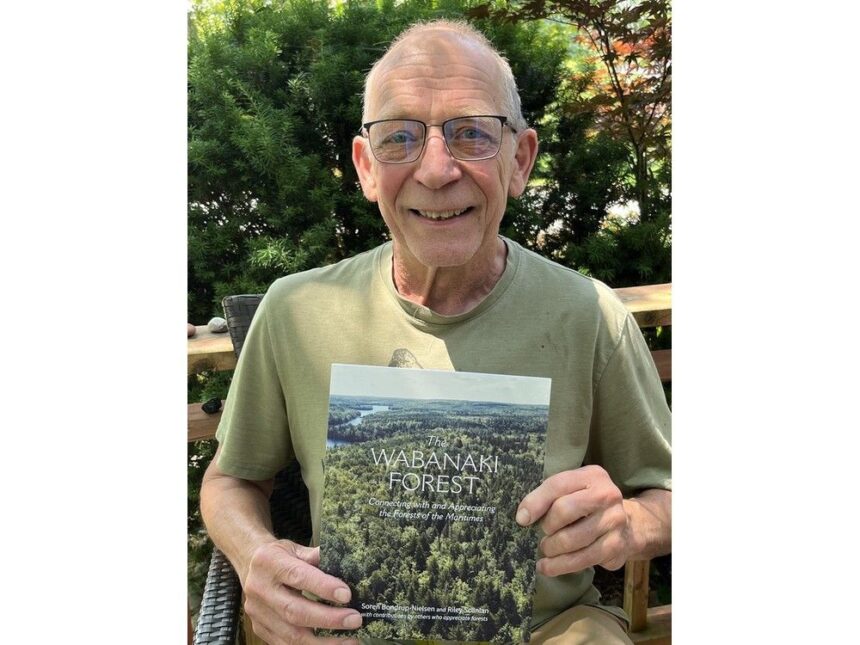Soren Bondrup-Nielsen is proud of the new compilation, The Wabanaki Forest, that is now available. The book was published by the Blomidon Naturalists Society. Photo by Wendy Elliott /Valley Journal-AdvertiserArticle contentAuthors Soren Bondrup-Nielsen and Riley Scanlan have a new book out about the forests of the Maritimes – The Wabanaki Forest.THIS CONTENT IS RESERVED FOR SUBSCRIBERS ONLY.Subscribe now to access this story and more:Unlimited access to the website and appExclusive access to premium content, newsletters and podcastsFull access to the e-Edition app, an electronic replica of the print edition that you can share, download and comment onEnjoy insights and behind-the-scenes analysis from our award-winning journalistsSupport local journalists and the next generation of journalistsSUBSCRIBE TO UNLOCK MORE ARTICLES.Subscribe or sign in to your account to continue your reading experience.Unlimited access to the website and appExclusive access to premium content, newsletters and podcastsFull access to the e-Edition app, an electronic replica of the print edition that you can share, download and comment onEnjoy insights and behind-the-scenes analysis from our award-winning journalistsSupport local journalists and the next generation of journalistsRegister to unlock more articles.Create an account or sign in to continue your reading experience.Access additional stories every monthShare your thoughts and join the conversation in our commenting communityGet email updates from your favourite authorsSign In or Create an AccountorArticle contentThrough the book, they take readers on a journey of appreciation and understanding of the forests around us.Article contentArticle contentWabanaki is the Mi’kmaq word denoting the first dawn and one of the group of 10 contributors, says Shalan Jodrey, explaining the word refers to northeastern Turtle Island. That is where the rising sun first casts its light. The Wabanaki forest stretches from Connecticut to northern New Brunswick and includes most of Nova Scotia.Article contentArticle contentThe book, published by the Blomidon Naturalists Society (BNS), challenges all of us to consider forests as more than just trees that can supply fibre for various human uses such as lumber, pulp, and woodchips. Forests are so much more – unique ecosystems harbouring thousands of species of plants and animals, says Bondrup-Nielsen.Article contentForests are important for human spiritual and mental health, and they are the best way to capture carbon on earth. The Wabanaki Forest explores the fascinating history of how First Peoples and settlers have lived with forests over time, and why they are under threat from humans, especially from industrial forestry, which changes the nature of the forest. It considers future prospects, including pathways to conserving and restoring these forests for the benefit of ecosystems and humans.Article contentArticle contentThe book is written in an engaging and personal manner for anyone who has an interest in or cares about forests. It includes a series of short, insightful essays contributed by forest lovers and specialists. It covers the gamut from personal and historical anecdotes to ecological knowledge, says Bondrup-Nielsen, all accessibly written from a personal storytelling perspective. With more than 170 colour photos, the visuals bring the text to life.Article contentArticle contentWil Bruner explains the concept of forest bathing as a means to connect with mindfulness and self-care. There is an excellent description of the 13 kinds of trees that make up the Wabanaki forest. I was amazed and saddened to read that old-growth forest reserves are less than 0.9 per cent of the woods around us. And the hemlock woolly adelgid and other insects threaten those old trees.Article contentMelanie Priesnitz, who nurtures the Harriet Irving Botanical Gardens at Acadia University, ponders the battle against invasive species.
BOOK REVIEW: The Wabanaki forest explained and cherished











